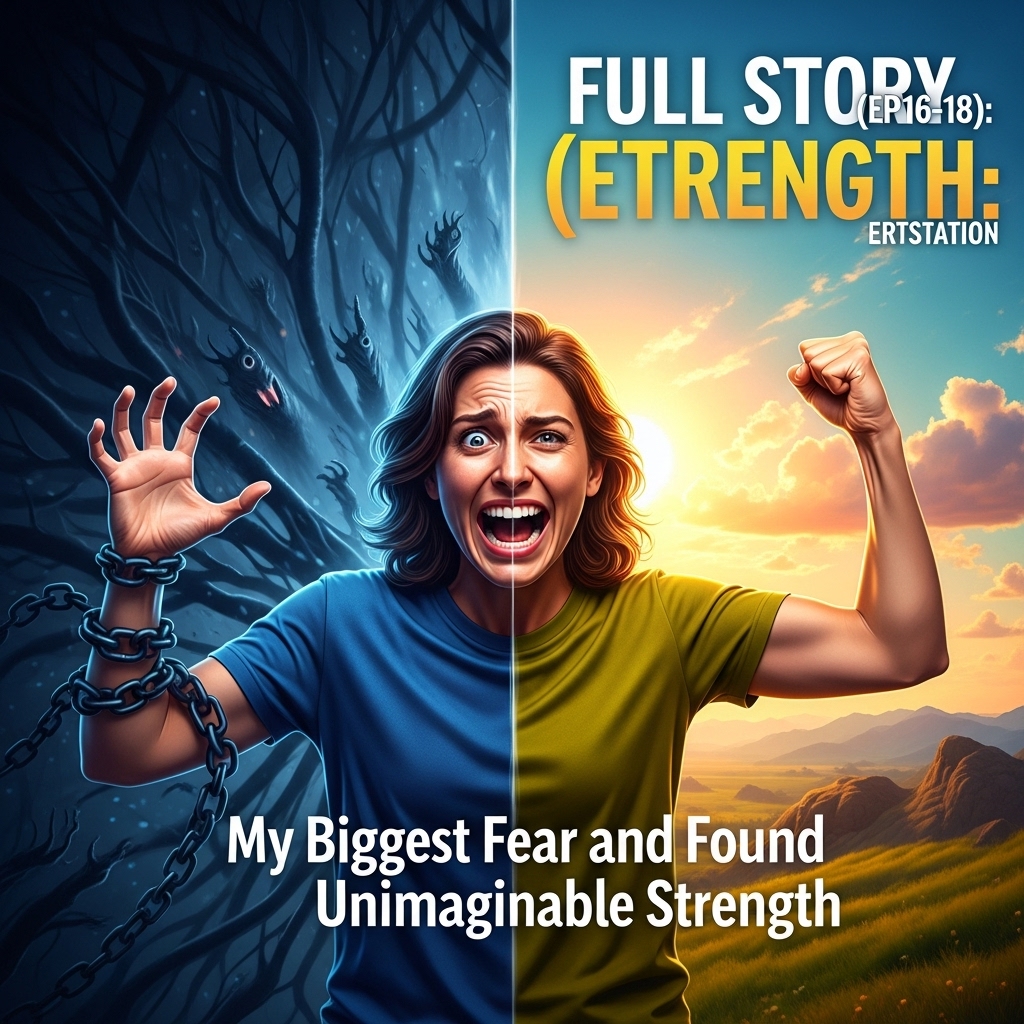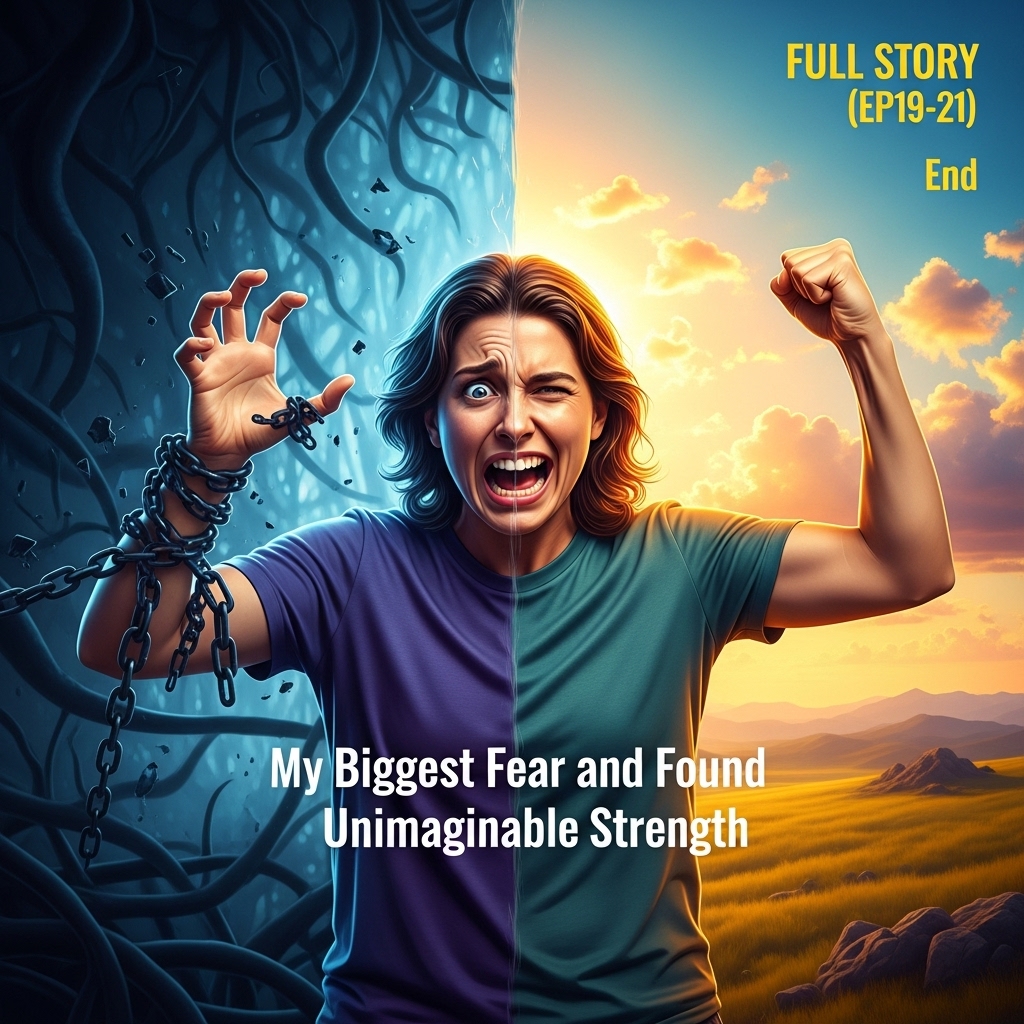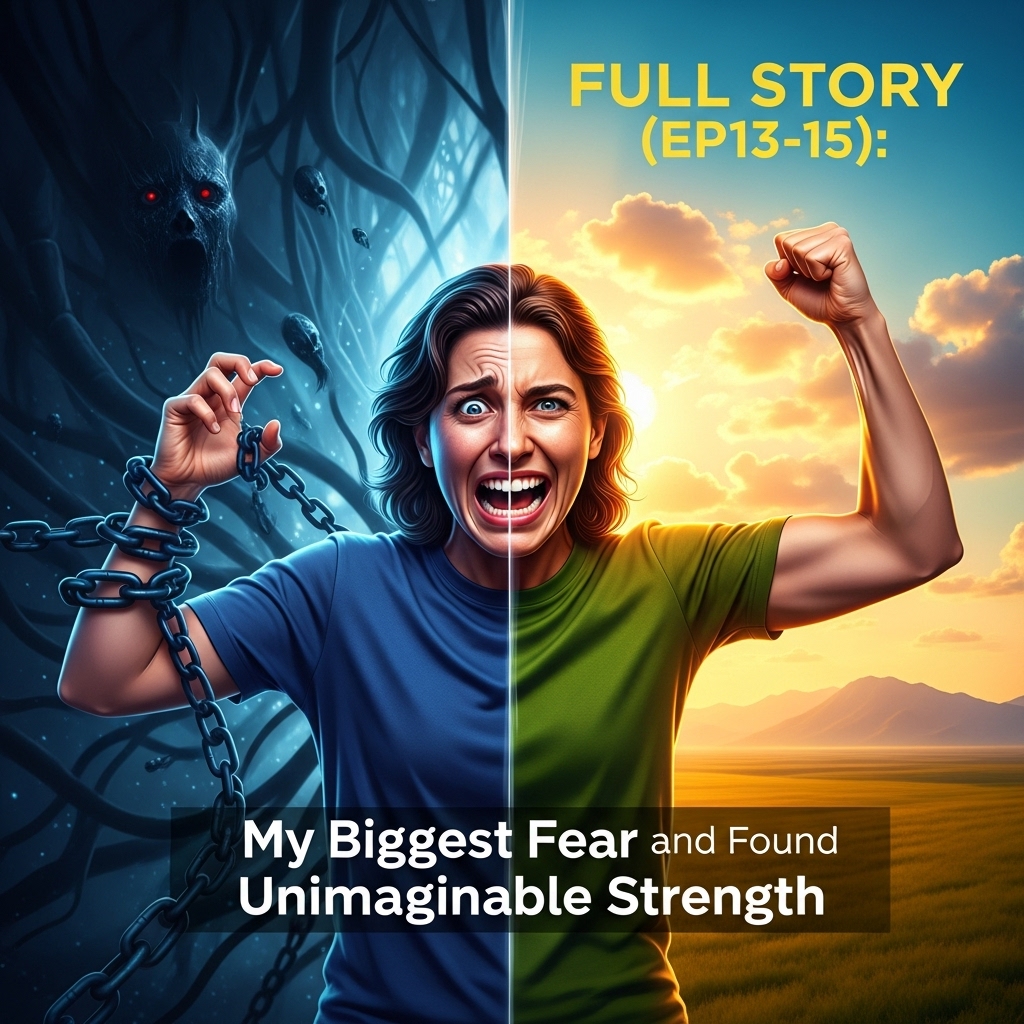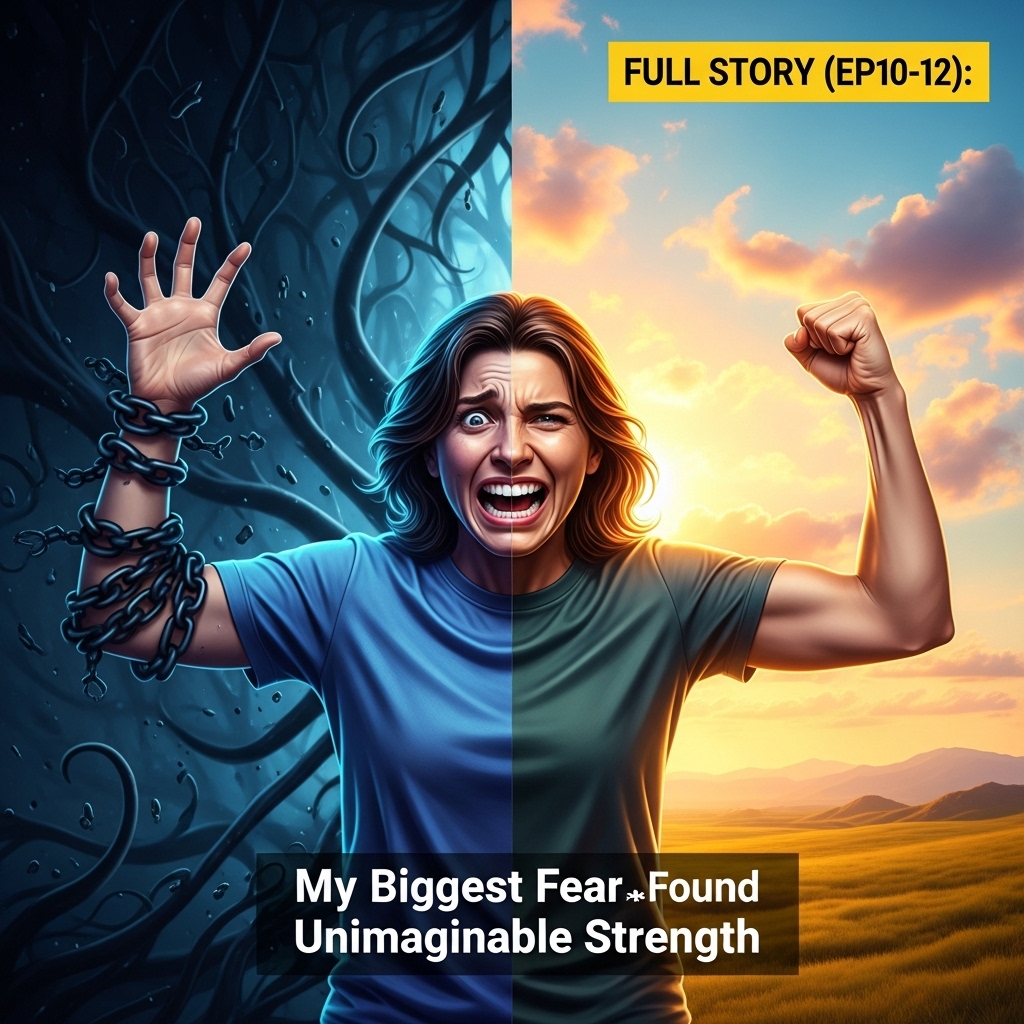Episode: 16
I began to realize that true strength wasn’t about silencingthe critic, but about cultivating a more powerful, more loving advocate within. This advocate didn’t dismiss the fear; it acknowledged it and then offered a path forward, a breath, a grounding technique, a reminder of past resilience. It was avoice of deep self-compassion, and it became an indispensable ally. I started to speak to myself as I would a dear friend facing a challenge—with kindness, understanding, and unwavering belief. This was revolutionary. It showed me that thegreatest battles we face are often fought within, and that the most potent weapon is often self-kindness.
Patience, too, revealed itself as a foundational pillar of strength. My journey hadn’t been a sprint; it had been apainstaking marathon, filled with small, deliberate steps and inevitable setbacks. Before, I might have seen setbacks as failures, proof that I wasn’t strong enough. But now, after witnessing my own persistent effort, even when progress felt agonizingly slow, Iunderstood that patience wasn’t passive waiting. It was active endurance. It was the commitment to keep showing up, to keep trying, even when the results weren’t immediately visible. It was the quiet faith that small, consistent actions accumulateinto significant change. This was especially true after the concert. The immediate calm was palpable, but the work of integrating that strength into daily life was ongoing, requiring immense patience with myself and the process.
This ongoing integration involved revisiting situations that previouslytriggered anxiety, but now with a new lens. A crowded shopping mall, which once felt like a suffocating cage, now presented an opportunity to practice my newfound skills. I would walk in, feel the familiar flicker of unease, and then,instead of immediately retreating, I would choose to stay for a few extra minutes. I would consciously engage my senses—noticing the colors, the sounds, the smells—to anchor myself in the present. Each small, deliberate extension of mycomfort zone wasn’t about proving something to others; it was about reinforcing the neural pathways of resilience within myself. Each successful navigation, however small, was a quiet victory, a confirmation that I was building something real and sustainable.
Oneof the most surprising discoveries was the sense of agency that began to bloom. For years, I had felt like a victim of my fear, pushed and pulled by its dictates. Now, I understood that I had choices. I could choose myresponse. I could choose how to interpret sensations. I could choose to stay, to breathe, to observe. This wasn’t about controlling the fear itself, but about controlling my reactions to it. It was a profound shift from a reactivestance to a proactive one. This agency wasn’t a boastful power; it was a quiet, steady internal knowing that I was the author of my own experience, even when circumstances felt challenging. It was the quiet realization that my powerdidn’t come from external validation or the absence of difficulty, but from my internal capacity to navigate whatever arose.
This reclamation of agency began to ripple into other areas of my life, almost imperceptibly at first. I found myself speaking upmore often in conversations, expressing my opinions more freely. Decisions that once felt paralyzing—such as planning a trip or taking on a new responsibility at work—now felt more manageable, less fraught with potential catastrophe. It wasn’t thatthe challenges themselves had lessened, but my internal landscape had changed. I now approached these situations with a quiet confidence, born not from certainty of success, but from an inner trust in my capacity to adapt and cope, whatever the outcome. Thiswas the true unveiling of inner power: not a force to conquer the world, but a grounded, unwavering belief in oneself.
I started to understand that “courage” itself had been largely misunderstood by me. I used to think courage meantnot being afraid. Now, I knew it meant feeling the fear, acutely, intensely, and choosing to act anyway. It was the willingness to step into discomfort, not because one enjoys it, but because one values growth and experience more than theimmediate relief of avoidance. The concert had been a masterclass in this kind of courage. I hadn’t enjoyed every moment, far from it. But I had chosen to remain present, to engage with the challenge, and in doing so, I hadredefined what it meant to be truly brave. It was a subtle, internal re-calibration of what it meant to be strong, moving from an external, performative idea of courage to an internal, deeply personal one.
This new perspectivealso shed a different light on my past. Memories of times I had retreated, avoided, or been overwhelmed by fear no longer carried the same sting of shame or regret. Instead, I saw them as part of the journey, necessary steps that had ultimatelyled me to this point of understanding. They weren’t failures; they were experiences, each one containing a lesson, each one contributing to the eventual unveiling of my strength. This act of reframing my personal history was incredibly liberating. It allowedme to integrate my past, not as a collection of regrets, but as a rich tapestry of learning and growth. It taught me that strength isn’t just about moving forward, but also about gracefully reconciling with what has come before.The deeper I delved into these discoveries, the more I realized that this strength wasn’t something I had acquired, like a new skill or a piece of knowledge. It was more akin to something that had always been present, lying dormant, patientlywaiting to be recognized and unleashed. It was as if I had been carrying a vast, untapped reservoir of resilience within me all along, and the process of confronting my fear had simply opened the floodgates, allowing its vital waters to flow.This revelation was both humbling and profoundly empowering. It meant that this capacity wasn’t a fleeting gift; it was an inherent part of my human makeup, and therefore, it was inextinguishable.
The world itself seemed to take on newtextures and colors in the wake of this shift. Sensory details, which had often been dulled by the fog of anxiety, now felt sharper, more vibrant. The taste of my morning coffee, the warmth of the sun on my skin,the sound of birdsong—all seemed to resonate with a deeper intensity. It was as if my nervous system, no longer constantly on high alert, was finally able to process the richness of everyday experience without distortion. This re-calibration wasn’t a conscious effort; it was an organic outcome of living with less internal tension. It was the surprising joy of simply *being*, fully and unreservedly, in the present moment.
Episode: 17
This nuanced victory wasn’t a sudden, grandpronouncement, but rather a series of quiet, persistent unveilings. It was the realization that strength isn’t about perfection, but about perseverance. It’s about accepting that the journey will be messy, that there will still be momentsof doubt and discomfort, but that you possess the inner resources to navigate them. This embrace of imperfection was a significant part of my newfound strength. The pressure to be fearless, to never stumble, had been immense. Now, I understood that true strength oftenlay in vulnerability, in acknowledging my limits, and in extending kindness to myself when I fell short. It was in those moments of vulnerability that genuine human resilience truly shines, for it is then that we truly learn what we are made of.
Lookingto the future, the landscape of possibilities had fundamentally changed. It wasn’t that I suddenly expected life to be without challenges. In fact, I understood more deeply than ever that challenges are an inherent part of living. But now, I approached themwith a different internal posture. Instead of dread, there was a quiet sense of readiness. Instead of feeling overwhelmed, there was a belief in my capacity to adapt and to learn. The fear of the unknown, while still present as a humanemotion, no longer held the same paralyzing grip. It had been replaced by a sense of curiosity, an understanding that even in the face of difficulty, there was potential for growth, for further unveiling of strength, for deeper self-discovery.The process of overcoming my biggest fear had not just changed one aspect of my life; it had fundamentally altered my entire perception of myself and the world. It taught me that the greatest battles are fought within, and the most profound victories are oftenthe quietest ones. It revealed that resilience isn’t a trait bestowed upon a lucky few, but a muscle that can be strengthened through consistent effort and self-compassion. And most importantly, it unveiled a deep, unwavering wellspringof inner power that had been patiently waiting to be recognized, a power that now allows me to live not fearlessly, perhaps, but certainly with a newfound and undeniable strength.The unveiling of that deep, unwavering wellspring of inner power was a profound, transformative experience. It was like discovering a hidden continent within myself, rich with resources I never knew existed. But a discovery, however magnificent, is just the beginning. Thereal work, the sustained artistry of living, lies in integrating that newfound strength into the everyday fabric of existence, in tending to it, allowing it to unfurl and deepen, day by day, moment by moment. This is the essence of sustaining momentum.It’s tempting, after such a victory, to believe the battle is entirely won, that the fear has been utterly vanquished, never to return. But life, in its beautiful, persistent complexity, rarely offers such clean, definitive endings.True growth isn’t a finish line we cross once and for all; it’s a journey, a continuous blossoming. The strength I had uncovered was not a static treasure to be admired from afar, but a living, breathing entity that required consistent nourishmentand attentive care. Think of it like a carefully cultivated garden. You can’t simply plant the seeds of resilience and then walk away, expecting a vibrant harvest. No, you must return, day after day, to water, to weed, toprune, to protect against the unexpected storms.
The first crucial step in sustaining this momentum was a subtle but significant shift in my perspective. I learned to embrace the idea that growth is not linear. There would be days when I felt robustand unwavering, when the whispers of old fears were faint and easily dismissed. And then there would be other days, quiet and unexpected, when a particular scent, a sudden memory, or a fleeting shadow of a past experience would stir something withinme, a flicker of the old apprehension. These weren’t failures; they were simply reminders that the path of life is rarely a straight line. They were opportunities to practice, to re-engage with the tools I had acquired, to recommit to the journey.
One of the most potent tools I discovered for integration was the power of mindful presence. After the intensity of directly confronting my fear, there was a natural tendency to want to simply *be* in the relief, to bask inthe newfound lightness. But true integration demanded more than passive enjoyment; it demanded active engagement with the present moment. I began to incorporate simple mindfulness practices into my daily routine, not as a rigid discipline, but as a gentle anchor. This mightbe as simple as truly *tasting* my morning coffee, feeling the warmth of the mug in my hands, noticing the subtle bitterness and sweetness on my tongue. Or taking a few deep, deliberate breaths before answering an email, consciously grounding myselfin my chair, feeling the soles of my feet on the floor.
These small, consistent acts of presence served a profound purpose. They prevented me from drifting too far into the anxieties of the future or the regrets of the past. They reminded me thatstrength isn’t just about conquering grand challenges; it’s about the quiet, unwavering resolve found in the details of the everyday. When I was truly present, the old fears, which often thrived in the abstract realm of ‘what ifs’,had less space to take root. It was harder for them to capture my imagination when my attention was fully absorbed in the texture of a knitted blanket, the rhythm of rain against the windowpane, or the sound of birdsong just outside my window.Journaling became another invaluable companion in this ongoing process. While I had used it during the initial stages of understanding my fear, it now transformed into a reflective mirror, a space for dialogue with my evolving self. Each evening, or sometimes in the quiethush of early morning, I would open its pages. It wasn’t about recounting the day’s events in detail, but rather about exploring the internal landscape. I would reflect on moments where I felt strong, noting what catalyzed that feeling, whatchoices I made that led to a sense of empowerment. Equally important, I would acknowledge the moments of struggle, not with judgment, but with curiosity. *What triggered that familiar flicker of doubt? What was the underlying emotion? How did I respond, andwhat could I learn from it?* This consistent act of self-observation created a rich tapestry of my inner life, allowing me to track patterns, celebrate incremental victories, and gently course-correct when needed. It was a tangible record of mygrowth, a testament to the fact that I was actively participating in my own evolution.
Episode: 18
Beyond introspection, practical actions were paramount. Integrating newfound strength wasn’t just an internal monologue; it was an external demonstration. I started to deliberately seekout opportunities, even small ones, to step slightly outside my comfort zone in areas unrelated to my primary fear. If my initial fear had been about public speaking, for instance, then sustaining momentum might involve volunteering to lead a small team meeting, orjoining a book club where I knew I’d be expected to share my thoughts. These were not grand leaps of faith like the initial confrontation, but rather gentle, consistent pushes against the boundaries of what felt ‘easy’. Each small success, each momentof choosing courage over comfort, served to reinforce the neural pathways of resilience, building a robust network of self-trust. It was like a daily workout for the spirit, strengthening the muscles of resolve one repetition at a time.
This approach taughtme the incredible power of consistent, incremental effort. We often imagine transformation as a dramatic, sudden shift, a thunderclap moment. And while there are certainly pivotal moments, true, lasting change is more often the result of countless tiny decisions, faithfullymade, day after day. It’s the decision to take that extra breath, to write that journal entry, to choose the slightly challenging path over the easy one. These choices, accumulating over time, weave a new narrative for our lives, one where strength becomes less about a specific achievement and more about a consistent way of being.
Perhaps one of the most vital lessons in sustaining momentum was learning to reframe setbacks. In the past, any deviation from perfection, any stumble, would have been interpreted as a catastrophic failure, proof that I wasn’t strong enough, that the old fear was still lurking, ready to swallow me whole. But now, armed with a deeper understanding of human resilience, I began to see thesemoments differently. A setback wasn’t a sign of weakness; it was simply information. It was an indication that perhaps my approach needed adjusting, that I hadn’t fully understood a particular trigger, or that I simply needed more rest or self-compassion.
For example, there were times when an old, familiar wave of anxiety would wash over me, seemingly out of nowhere. Instead of succumbing to despair, I learned to pause, to breathe, and to ask:*What is this feeling trying to tell me? What physical sensations are present? What thoughts are arising?* It was an act of compassionate inquiry rather than self-condemnation. This gentle curiosity allowed me to detach from the overwhelming emotionalcharge and examine the experience more objectively. Often, I would discover that I was overtired, or hadn’t nourished myself properly, or was facing an entirely new, unrelated stressor that was simply mimicking the old fear’s disguise. By treating thesemoments as learning opportunities, I disarmed their power. They no longer had the capacity to send me spiraling back into the depths of self-doubt. Instead, they became guideposts, informing my journey, showing me where to direct my attentionand care.
Creating a supportive environment was equally crucial. This meant consciously curating my surroundings, both physical and interpersonal. I sought out people who genuinely understood and celebrated my growth, individuals who offered encouragement without judgment. These were the friendswho listened patiently when I shared a small victory, or offered a quiet presence when I confessed to a moment of weakness. Their belief in me became a reflection of my own growing self-belief. Just as important was gently distancing myself from relationshipsthat inadvertently pulled me back into old patterns of thought or behavior, those well-meaning but ultimately unhelpful voices that reinforced the narrative of caution and fear. This wasn’t about severing ties entirely, but about setting healthy boundaries, choosingwhere to invest my precious emotional energy.
My physical environment also began to reflect this commitment to growth. I cultivated spaces in my home that felt calm and inspiring, creating nooks for quiet reflection, for reading, for simply being. I broughtin plants, allowing their silent, persistent growth to serve as a metaphor for my own. I cleared clutter, recognizing that external order could often contribute to internal clarity. This wasn’t about perfection, but about intention; every object, every space, became a gentle reminder of the path I was on, supporting my forward momentum.
The fundamental connection between physical well-being and mental strength became undeniably clear. When I neglected my sleep, or ate poorly, or allowed myself to become sedentary, the echoes of old anxieties grew louder, more insistent. Conversely, when I prioritized nourishing my body with wholesome food, ensuring adequate rest, and engaging in regular, joyful movement, my inner resilience felt almost effortless. It wasn’t aboutstriving for peak physical condition, but about consistent, compassionate care for the vessel that carried me through life. A long walk in nature, feeling the cool breeze on my skin, the earthy scent of damp soil, the rustle of leaves underfoot – these simple acts became powerful antidotes to stress, reaffirming my connection to the wider world and my place within it, bolstering the strength I was cultivating.
Perhaps the most beautiful aspect of sustaining momentum was the expanding circle of strength it created. Overcoming my biggest fear wasn’t just about conquering *that specific fear*; it was about developing a transferable set of skills and a deeper understanding of my own capabilities. The resilience I built in facing that one formidable challenge began to rippleoutwards, touching every other area of my life. Smaller anxieties that once felt overwhelming now seemed more manageable. The prospect of trying something new, whether it was a creative pursuit or a professional endeavor, no longer carried the same weight of apprehension.I found myself approaching unexpected challenges with a quiet confidence I’d never possessed before. A difficult conversation at work, a logistical problem that seemed insurmountable, a personal disappointment – these moments, which once might have sent me into a spiral of self-doubt, now felt like opportunities to apply my newfound wisdom. I learned to lean into discomfort, trusting that even if I didn’t have all the answers immediately, I possessed the inner resources to figure things out, to adapt, to learn,and to grow. The fear of the unknown had not vanished entirely, but it had transformed from a paralyzing monster into a curious companion, a reminder that life’s richest experiences often lie just beyond the edge of our comfort zone.
Thisgrowth also ignited a desire to connect with others, to share the insights gained from my journey. There’s a particular alchemy that happens when we share our stories of vulnerability and triumph. It not only solidifies our own understanding but also offersa beacon of hope to those who might be grappling with their own hidden fears. Becoming a source of support for others, even in small ways, became a powerful reinforcement of my own strength. It was a reminder that our personal battles, though deeplyindividual, are also part of a universal human experience. In helping others navigate their shadows, I often found myself reflecting on my own path, seeing it with fresh eyes, and appreciating the incredible distance I had traveled.



